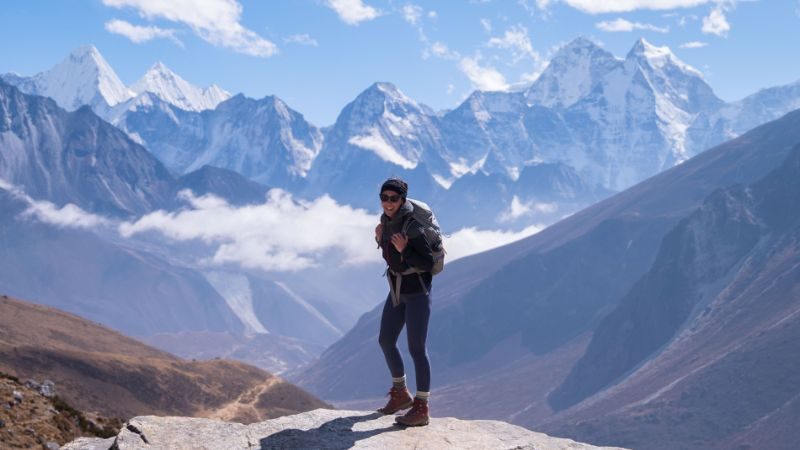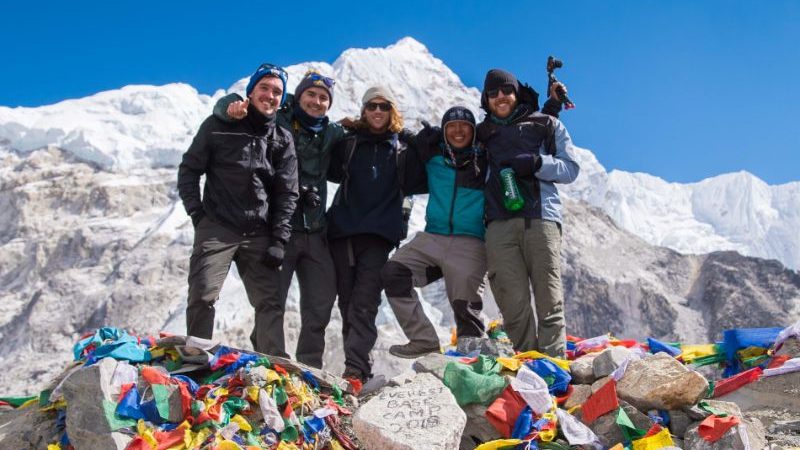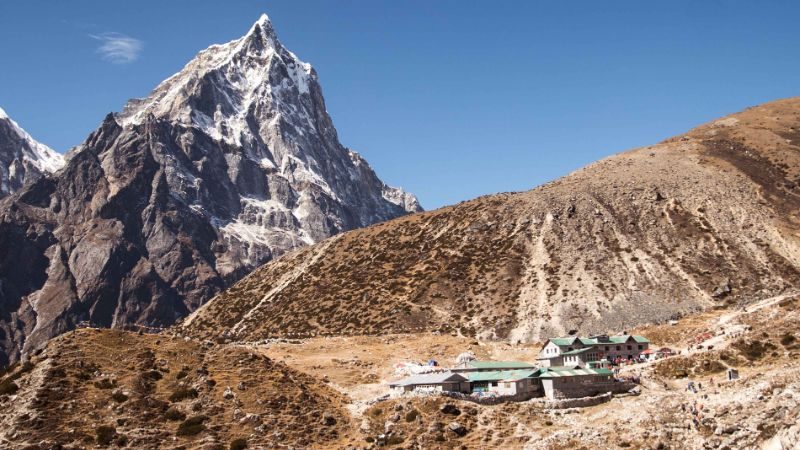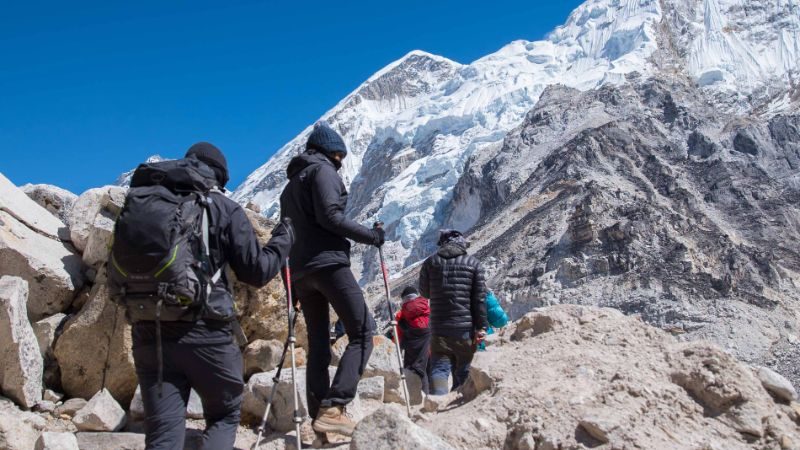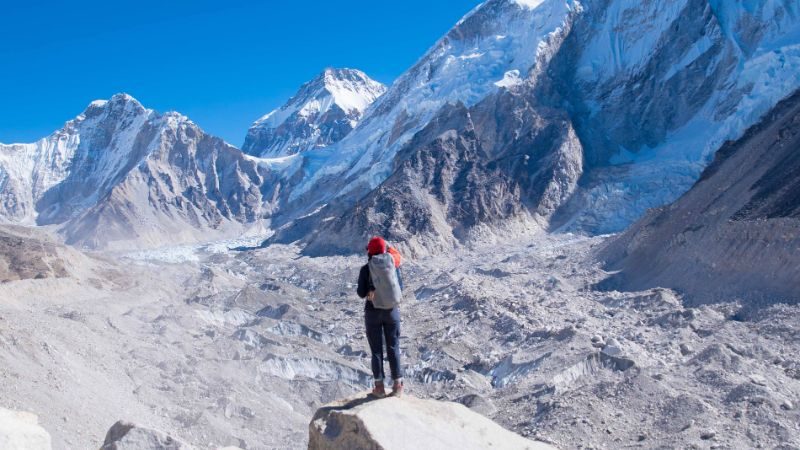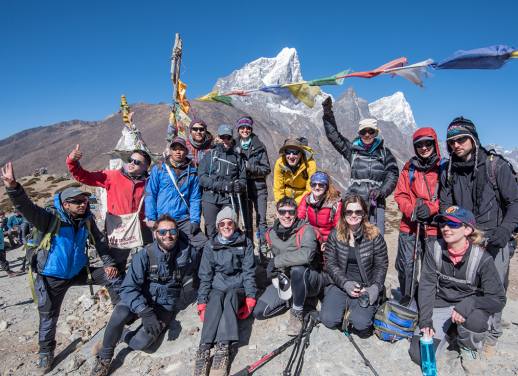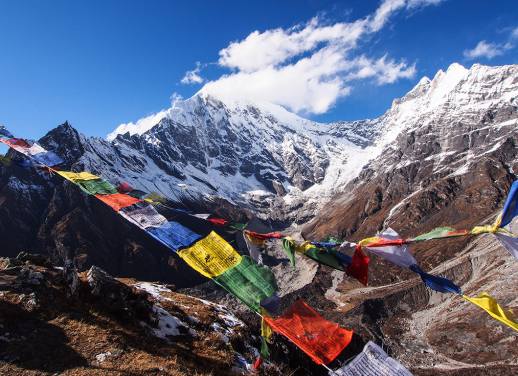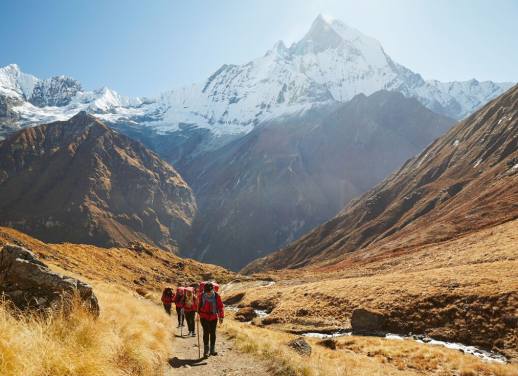Trekking to Everest Base Camp is no mean feat, but with a good dose of grit, an extra dollop of determination and a decent fitness regime, almost anyone can stand triumphant at the roof of the world.
Mind you, it’s not going to be easy. Hiking for more than ten days straight in Nepal – and rising to an altitude of over 5,000 metres – will inevitably cause some strain on your joints and muscles. That’s why it’s super important to get yourself off on the right foot (preferably laced into a well broken-in hiking boot).
Before you go to Nepal
First things first: you don’t have to be an Olympian. I can’t stress this enough. This might be your first big hiking adventure and that’s totally okay because Everest Base Camp (EBC) is for everyone. I mustered up the courage, and energy, to make the trek from Lukla last year, and while I’m no professional athlete it was definitely one of the most epic (and tough) experiences of my life.
That said, when I was trudging up the vertical to Tengboche, stopping every few minutes to catch my breath and allow another yak party to pass, I did wish I had given my body more of a heads-up. To ensure you don’t repeat my trekking traumas, we’ve enlisted the guidance and expertise of exercise scientist James Ross. Ross is a Melbourne-based strength and conditioning coach, fluent in all things related to hiking tips and tricks.
“There are a number of reasons why you would want to improve your physical capacity before undertaking a trek like EBC. Firstly, you want to actually enjoy the experience and not make it extremely grueling; secondly, you want to be safe,” says Ross.
To kick things off, he’s split your training into three parts: strength, endurance and hike practice. Future hikers, take note.
CHECK OUT OUR RANGE OF ADVENTURES TO EVEREST BASE CAMP HERE
1. Strength
You don’t need to be a power lifter to hike to Everest, but you do want to make sure you’ve got a pair of strong legs holding you up. After all, you’re going to be spending almost two weeks trekking on them. Ross agrees, saying “Improving your strength will help you navigate bumpy tracks and maintain good posture with a day pack on”.
He recommends a series of simple exercises that you could do most days at home, such as step ups, lunges, single-leg skipping, single-leg squats and farmers walks. “We want to follow a system here called ‘progressive overload’ – challenging your body to adapt and become stronger. For your first session, record how many reps of each exercise you can do comfortably and then from there you can progressively overload by increasing reps or length of time. For example, if you did three sets of 10 reps, you would then perform three sets of 11 reps next time,” he explains.
READ THIS: WHAT TO PACK FOR A TREKKING TRIP TO NEPAL
2. Endurance
“Establishing a good endurance base will help your body cope with the demands of the trek,” says Ross. Endurance can mean time on feet and can also refer to your cardio abilities; nothing gets your heart rate rocketing like a steady climb to the top of a mountain.
To work on your endurance, Ross recommends high-intensity interval training, going for a jog at a steady pace, or getting on a bike. Much like strength training, the key here is to slowly build up. Perhaps that means cycling further or running faster.
HIIT training is the opposite to going for a long run; it involves very short bursts (20 to 90 seconds) of cardio-focused movements. HIIT is all about pushing your body safely to its max and then allowing it a short rest period in between sets to recover. Common exercises included in HIIT workouts that you could try at home include burpees, sprints, the Fitness assault bike, stairs or kettlebell swings. Find what works best for you, then stick with it.
NOT SURE IF EBC IS FOR YOU? CHECK OUT OUR 15-DAY TAMANG HERITAGE & LANGTANG VALLEY TREK
3. Hike practice
SUBSCRIBE TO INTREPID’S NEWSLETTER FOR TRAVEL STORIES, COMPETITIONS & MORE
The aim of the game here is to get outside. Go and find a local hike and give it a red hot go. Ross recommends walking in all types of weather temperatures, and also making sure that whatever route you choose has a good mix of downhill and uphill.
“Hiking is a very important part of the puzzle. Hiking will form your specific preparation and expose your body to a wide range of movements. Generally, you want to start off with a manageable distance and then progressively increase the duration or load you’re carrying,” Ross says. Go ahead, break those boots in.
Really, the main tip when it comes to training for Everest Base Camp is that even a little bit goes a long way. Whether you’re hitting the gym, the stairs instead of the elevator, or your local hiking spot, your body is going to thank you for the exercise and all your hard work prepping when you reach the Himalayas.
Is Everest Base Camp calling for you? What about the trails in the region? Take a look at our Nepal trips here.
All photos by Tayla Gentle.

